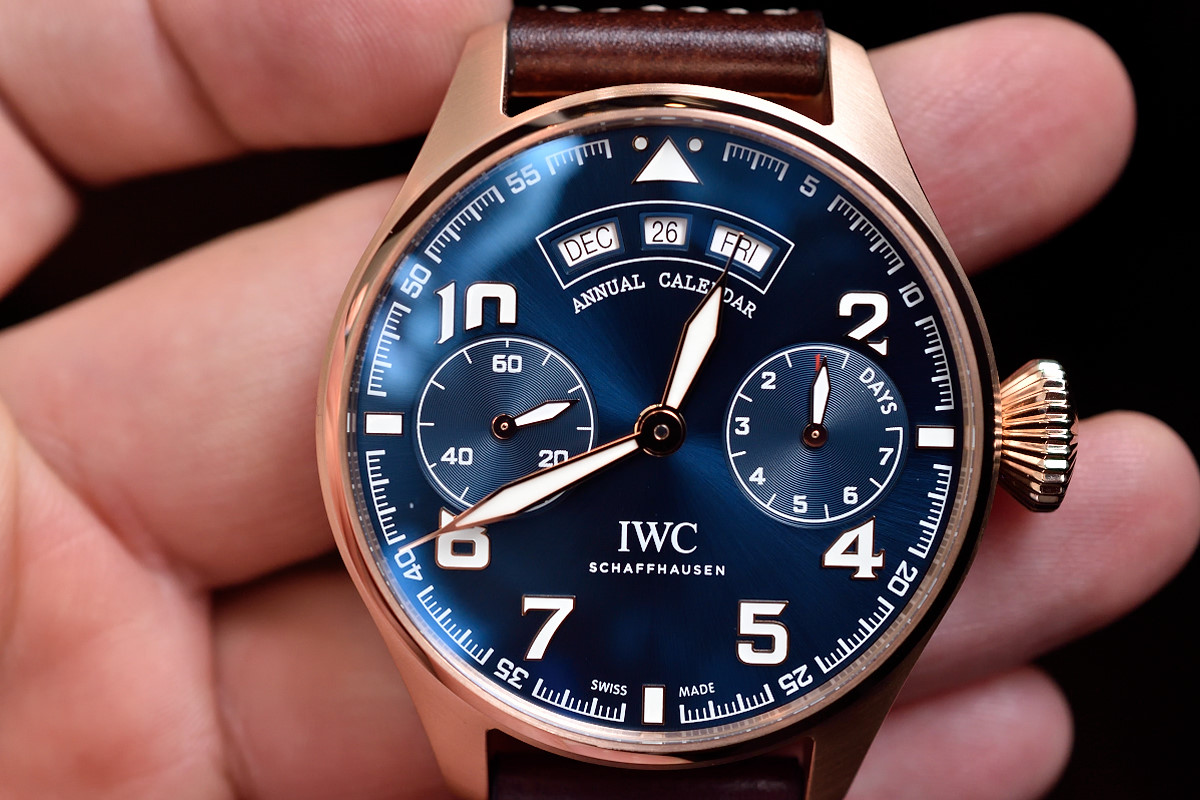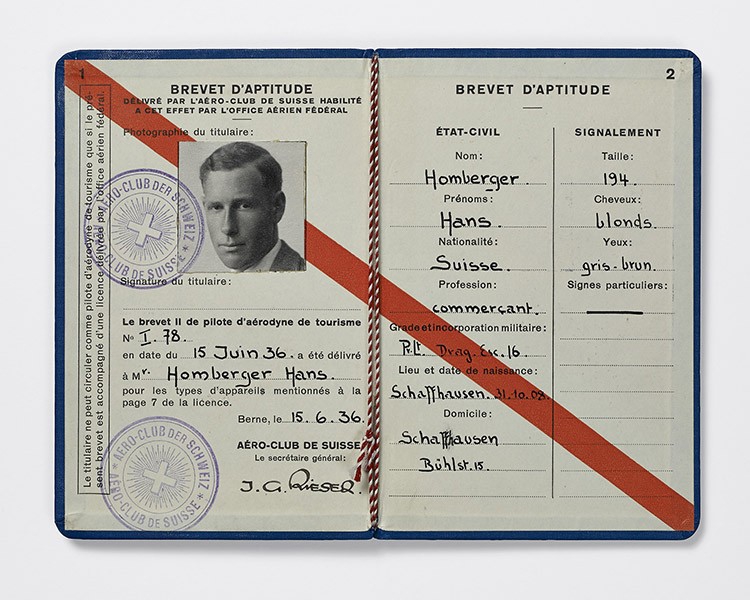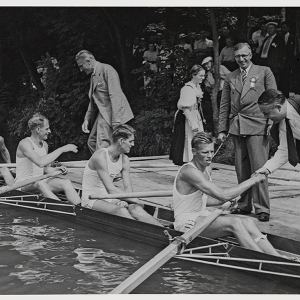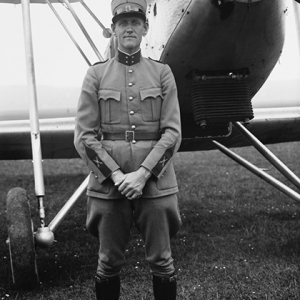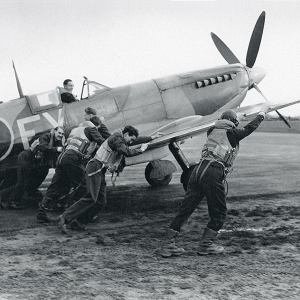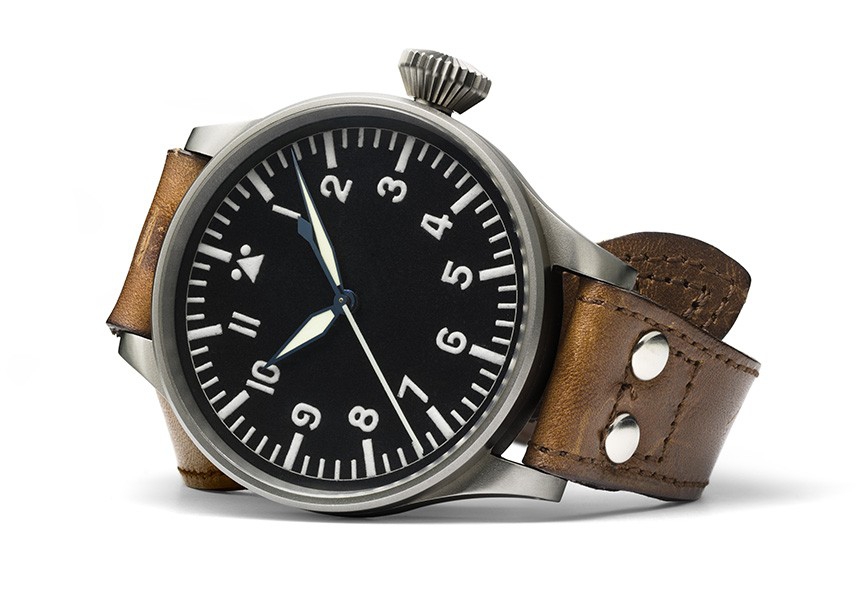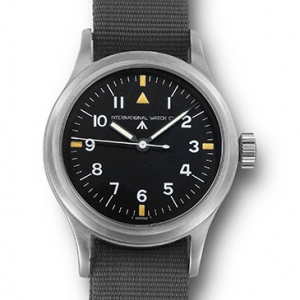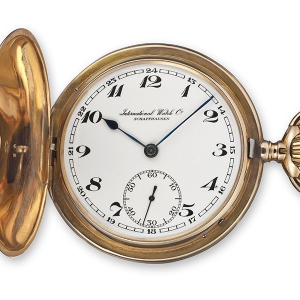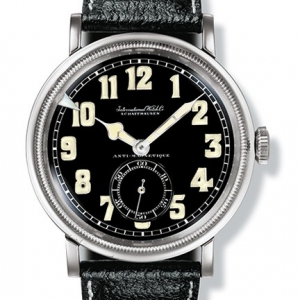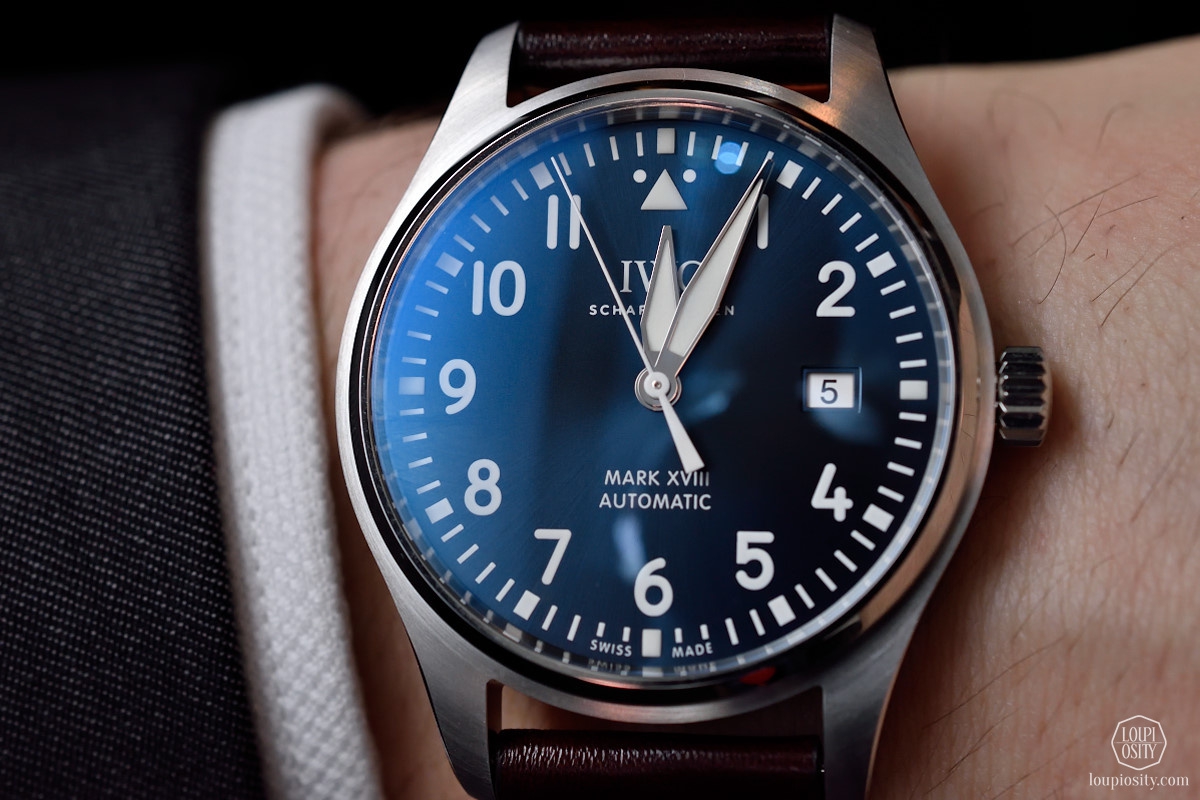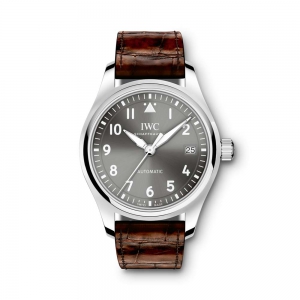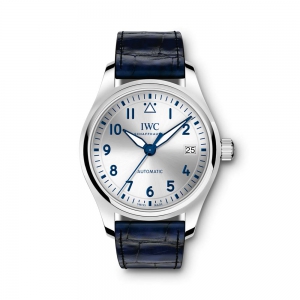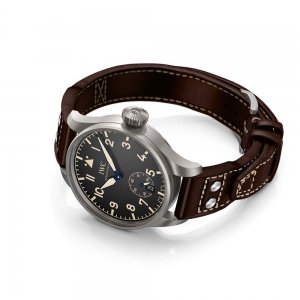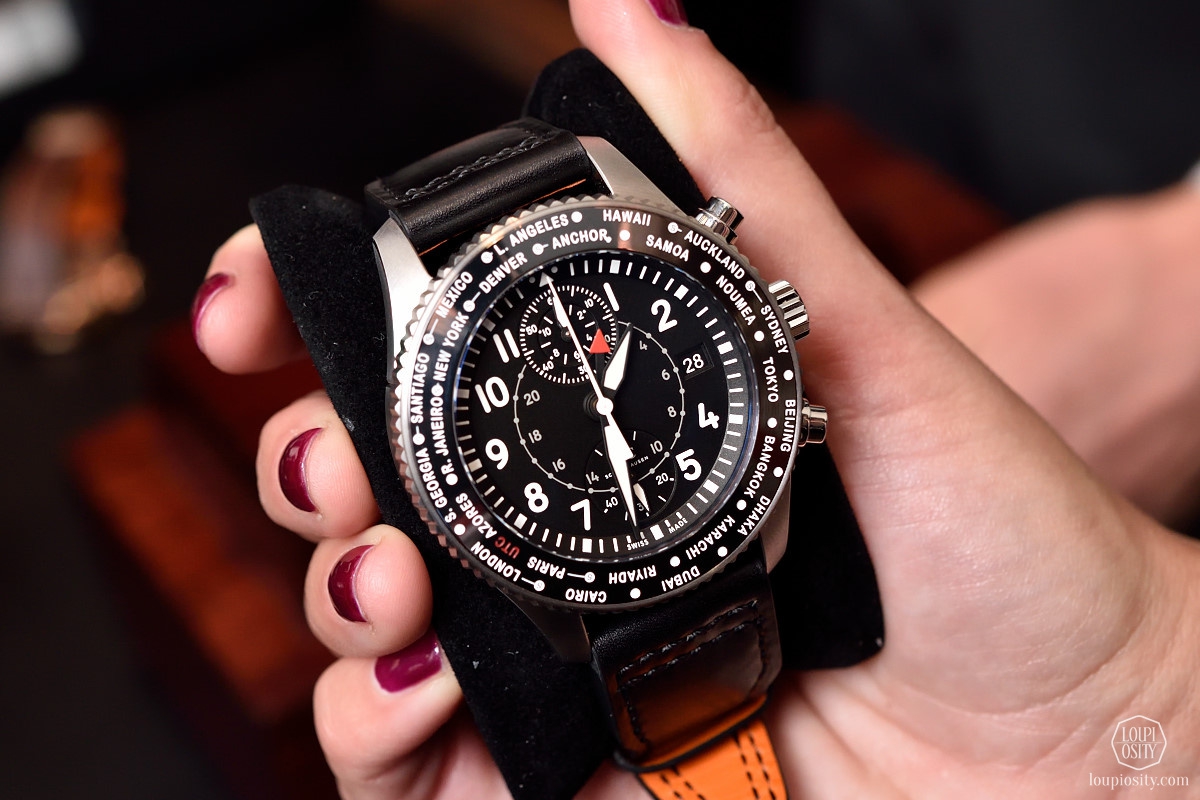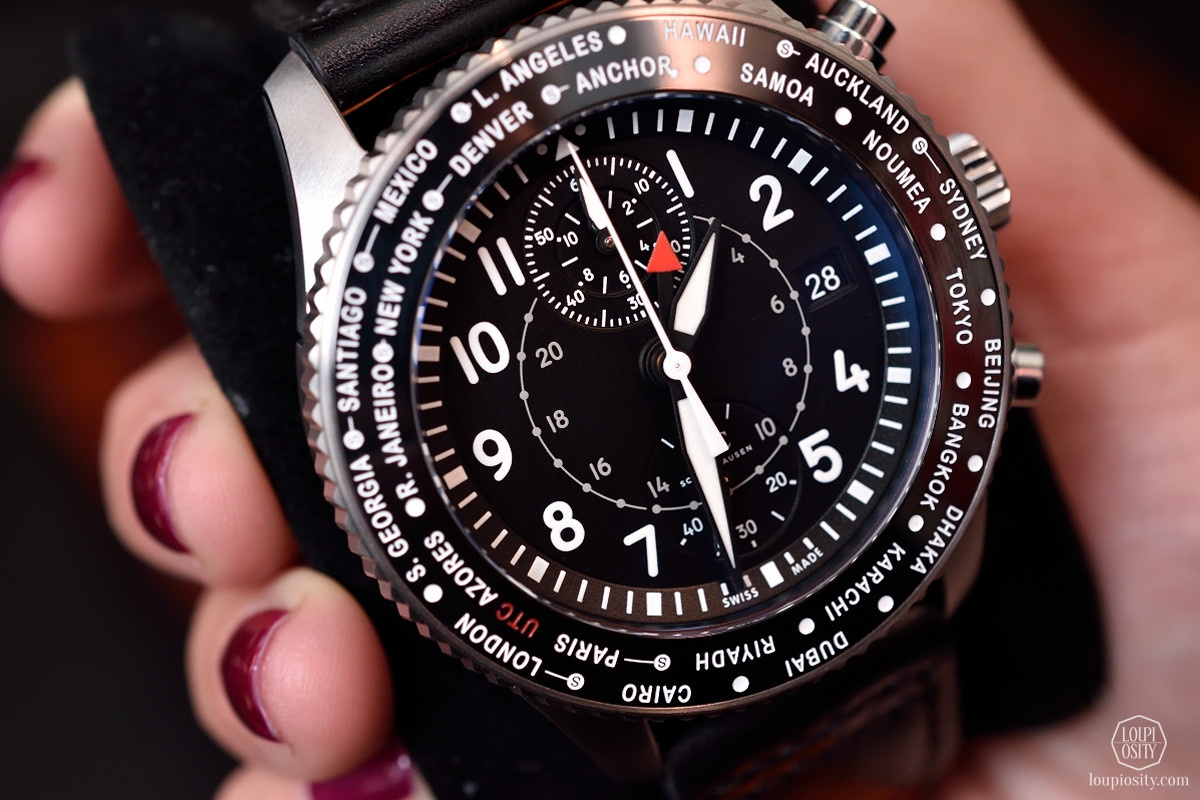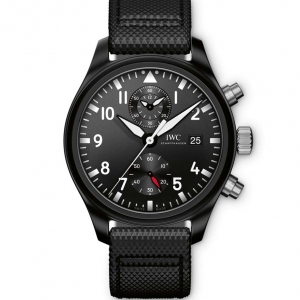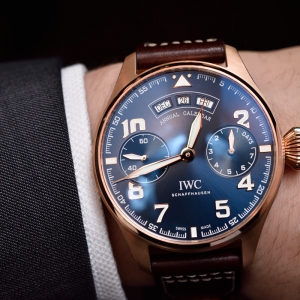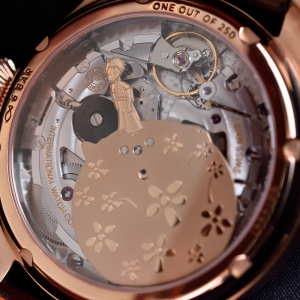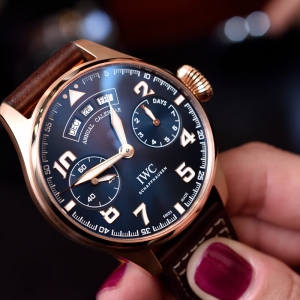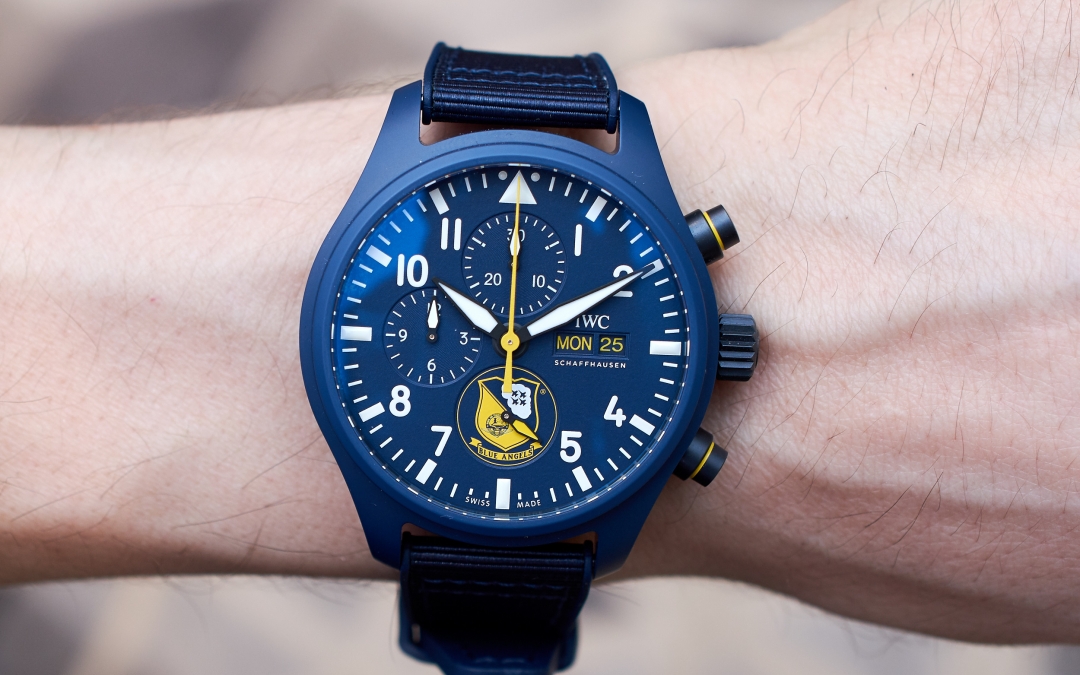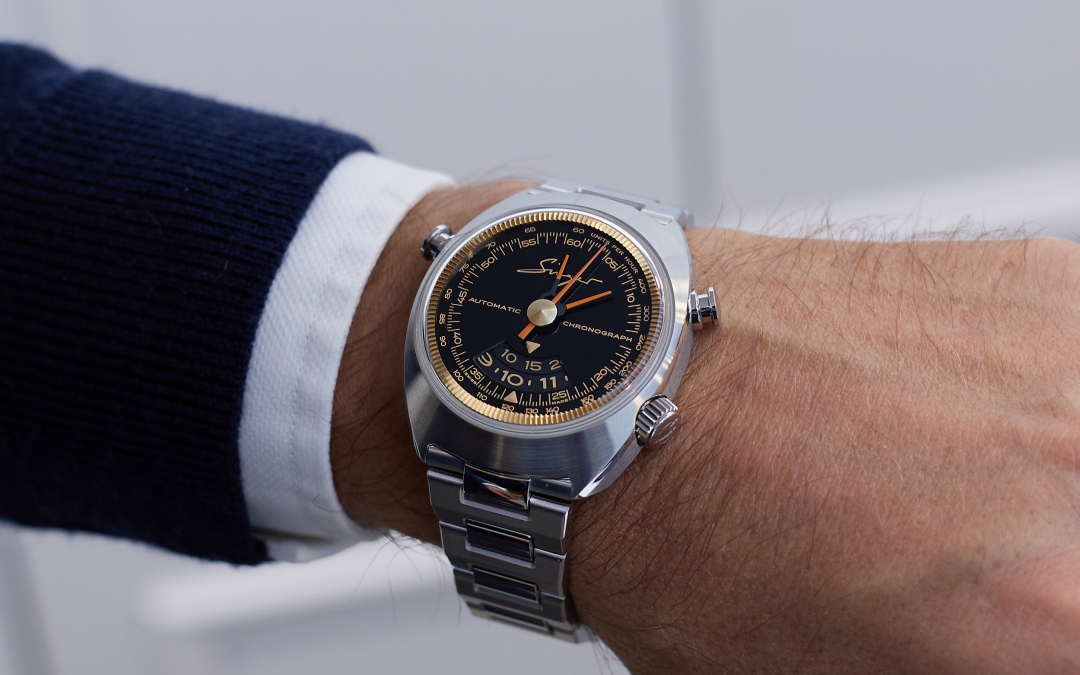I invite you to join me in the cockpit. Don’t be frightened of the number of gauges in front of you; they’re here to provide you with more certainty and control. I cannot help remembering the realistic images of Antoine de Saint-Exupéry describing the heydays of conquering aerospace. Pilots back then, giving up the comfortable safety of the ground were flying into the unknown on a daily basis. Desire for adventure, a sense of duty, the joy and freedom of being airborne, the beauty of the clear skies and the endless cloud cover dipping into sunshine were stronger forces than the fear of no return. Back then, cockpits missing most of these instruments were filled with courage, heroism, skill, ingenuity and prayers to God. Just open Saint-Exupéry’s Night Flight (French title: Vol de Nuit) or his memoirs the Wind, Sand and Stars (French title: Terre des hommes) to relive his heart-breaking stories.
We took off and ascended over the clouds with David Seyffer, curator of IWC’s museum in the company’s booth at SIHH. From a birds-eye perspective we looked at why IWC started to develop pilot watches in the 1930s that led to today’s models.
IWC and aviation aka the story of Hombergers
IWC was founded by an American engineer Florentine Ariosto Jones in 1868. In 1880 the Rauschenbach family took over the company and ran it for four generations until 1955. In 1905 a member of the family, Ernst Jakob Homberger became the CEO, who as a contemporary witnessed the Wright brothers’ flight and the rise of aviation from close proximity. His sons, Hans and Rudolf were sent to study in England, where the boys lived for their passions of sports and speed. Hans excelled at rowing to the extent that he became a silver medallist in the notorious 1936 Berlin Olympics in the coxed fours for Switzerland, and bronze medallist in the coxless fours. Besides, Hans and Rudolf passed their commercial pilot certification in England, and the latter became an active fighter in the Swiss Air Force. He participated (and was shot down, but survived) in the “Battle of Switzerland” between 10 May and 17 June 1940, when German Messerschmitts violating the Swiss air space were attacked by Swiss Messerschmitts.
Greatly dependant on accurate timing during flights, the boys pushed their father to develop a proper pilot watch for them, providing the requirements first hand. This is how the “SPECIAL WATCH FOR PILOTS” born in 1936 with feats like shatterproof glass, a rotating bezel with an index for recording short periods of time, an antimagnetic escapement and high-contrast luminescent hands and numerals.
In 1940 the Big Pilot’s Watch Ref. 431 (52-calibre T.S.C.) emerged with a decent 55mm diameter and a proportionally big crown that was easy to rotate even while wearing gloves. It was made for the German Air Force in a 1,000 piece batch adhering to the needs of clear legibility guaranteed by the previous observation watches. Having steel as the base material, this watch weighed a massive 183g in total.
After WWII, IWC developed a legendary pilot watch for the Royal Air Force, called the Mark 11. In order to protect the movement from magnetic fields they used a soft iron cage. The model, being the last true pilot lifesaver, was in service until 1981. With the rapid development of aeronautical gauges and satellite-aided navigation systems, the usage of pilot watches became more about fashion and belief than necessity.
The revival of pilot watches in the 1980-90s still resulted in superb models, such as the Mark XII in 1994, the Pilot’s Watch UTC in 1998 or the Double Chronograph in 1992. In 2002 IWC returned to the traditional Big Pilot’s Watch of the 40s and issued the Ref. 5002. The pilot watches are categorized into collections, such as Classic, Spitfire, Antoine de Saint Exupéry, Le Petite Prince and the Top Gun.
Novelties introduced at SIHH 2016
In 2016 IWC gave full attention to the sharpening air combat of pilot watches on the market. The company has widened their portfolio with new entry-level models and issued a 36mm diameter version of the Pilot Watch Automatic targeting smaller wristed men and ladies.
The latter I found rather interesting from IWC knowing that Pilot Watches have been solely for men before and now – having a woman among the aviators in the video – they explicitly address ladies. The Pilot Watch Automatic 36 comes in steel with various strap – dial combinations. The calibre is the automatic Sellita fabricated movement coded 35111, which operates the Portofino models.
The smallest in the crowd is accompanied by the largest – the Big Pilot’s Heritage Watch is a 100-piece limited edition possessing similar dimensions as the 1940 model: 55mm in diameter. Maintaining the soft iron inner cage, this time the case was worked out of titanium, summing up 150g in weight. Hands are kept in constant motion by the in-house IWC hand-wound 98300 calibre. In addition to the 75 year-old model, it has small hacking seconds at 6 o’clock. The Big Pilot’s Heritage Watch also comes in a more moderate 48mm, 1,000-piece limited version too, with a different, yet in-house calibre 59215.
The Pilot’s Watch Mark XVIII has shrunk compared to the previous Mark XVII model and the triple date display is also gone. The result is a 40mm clean entry-level timepiece, one step closer to the original Mark 11.
For frequent travellers, the Pilot’s Watch Timezoner Chronograph is the model to go for. The time-zone switching function is activated by rotating the bezel. By doing so, you’re actually simultaneously setting the hour hands (the 24 day-and-night hand and the hour hand) as well as the date. A sprung mechanism prevents accidental setting – you need to push down the bezel first and rotate it with the same movement. The chronograph and the time functions are provided by the IWC-manufactured 89760 calibre.
The Top Gun collection, which is the most recent in IWC’s Pilot Watch line, launched in 2012 as a separate family, received many novelties in 2016. Many of them are again smaller diameter versions of former editions, which shows an opposite trend in terms of sizing from the previous years. 2016 Top Guns are the Big Pilot’s Watch Perpetual Calendar TOP GUN, the Pilot’s Watch Chronograph TOP GUN and the Pilot’s Watch Chronograph TOP GUN Miramar. The 41mm Pilot’s Watch Mark XVIII TOP GUN Miramar is a new entrant giving optimal legibility to seconds and minutes.
One of my favourite this year was the Big Pilot’s Watch Annual Calendar Edition “Le Petit Prince” with its beautiful combination of midnight-blue and sunray brushed dial and the 18-karat red gold case. The familiar annual calendar displays date so naturally. The operation of the in-house developed 52850 calibre is supervised by the Little Prince, who’s standing on his planet that gives the rotor of the watch. Just as on all other novelties, the strap is made in collaboration with the Italian shoemaker, Santoni. The timepiece is limited to 250 pieces.
Photo credits: IWC Schaffhausen, Loupiosity.com.
All registered trademarks are property of their respective owners.
All rights reserved.
